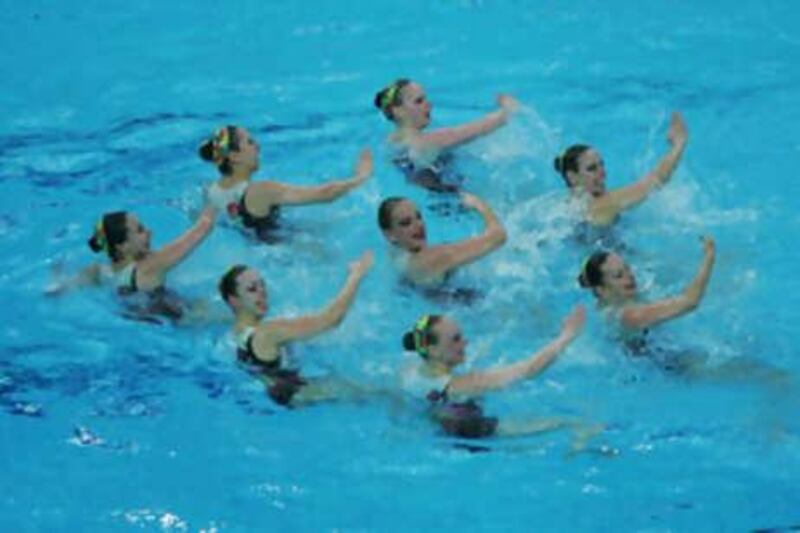Next time you are presented with a glass of water, pause for a moment. The colourless, tasteless and odourless liquid before you has a good claim to be the strangest substance known to science. Everyone knows water is precious and vital to life. It makes up around half of our body weight, and if that figure drops by just 15 per cent, we die. But its familiarity blinds us to the sheer strangeness of water.
Put ice cubes into a glass of water and they float - in defiance of the rule that substances become denser when they turn solid, which should ensure ice sinks to the bottom of the glass. And that's just the start: most substances shrink as they cool - but not water, which expands. It's also stickier, less compressible and harder to boil than any comparable liquid, needing ten times more energy to warm it up than solid iron. In all, scientists have identified over 60 anomalous properties of water, many having a direct effect on life on Earth. If ice did not float, the oceans would have frozen solid from the bottom up billions of years ago, killing all marine life. The reluctance of water to warm up means that the oceans have been slow to respond to global warming, thus buying us time to act against climate change.
Perhaps the most astonishing fact about water is just how little scientists know about some of its most basic properties. Its constituents are familiar enough - hydrogen and oxygen - and its chemical formula H2O known by schoolchildren everywhere, yet exactly how this molecule behaves as a liquid is far from clear. Now scientists think they've made a breakthrough which could help explain many of its otherwise baffling behaviour. An international team led by Anders Nilsson at the Stanford Linear Accelerator Center in California has been examining water by blasting it with X-rays, and watching how they interact with H2O molecules in the liquid state.
In isolation, water molecules are V-shaped, their two hydrogen atoms stuck to the single oxygen atom via chemical bonds. When water turns to ice, the molecules team up with their neighbours to form groups of tetrahedra ? triangular-faced pyramids held rigidly together. As ice warms and melts, these tetrahedra were expected to loosen their bonds to each other, but remain present in the liquid water. But when Nilsson and his colleagues shone X-rays into samples of water, they found that the tetrahedra were accompanied by something else. Another, less defined structure also appeared between the molecules, almost as if the water was made up of two separate substances.
Fittingly enough, this finding - reported in the current issue of Chemical Physics Letters - ties in with ideas put forward around a century ago by Wilhelm Roentgen, the German physicist who won the first Nobel Prize in physics for discovering X-rays. He suspected the weird behaviour of water might be explained by the presence of two different molecular structures, as the 21st century manifestation of his discovery now suggests.
The new finding will be of particular interest to biologists, who are finding ever more connections between the processes of life and the detailed properties of water. The shape and strength of its chemical bonds are crucial in the behaviour of proteins, which control the behaviour of living cells. Strong enough to do some heavy lifting at the cellular level, the bonds are also incredibly flexible. This allows them to guide the creation of proteins made by living cells, ensuring they fold into the right shape and thus function correctly. It also allows them to slip in and out of living cells via special channels known as aquaporins, the discovery of which won the 2003 Nobel Prize in chemistry, and whose significance is still being studied.
The new insights into the structure of water are also likely to rekindle one of the most bitter debates in science. Ever since it was first put forward as a medical therapy around 200 years ago, homoeopathy has been derided by mainstream medics as nonsense. The basic idea is a little like inoculation, with patients being given solutions of compounds that would normally cause their symptoms. But the solutions used are very dilute - in some cases so dilute that they no longer contain a single atom of the original compound.
Many medical scientists insist that patients given such homoeopathic remedies are benefiting solely from the placebo effect, by which people simply think themselves better. Even so, there is some evidence from scientific trials that homoeopathy has a genuine effect, which raises the question: how? One suggestion is that the process of diluting and shaking - "succussing" - used in preparing the remedies allows the water to retains a "memory" of the substance it once contained. But experts on the chemistry of water point out that the molecules in liquid water are constantly making and breaking links with each other ? hardly a promising medium for retaining memories.
There's a loophole in this argument, however. While the individual bonds are in a constant state of flux, large-scale patterns can remain intact - a little like a dance where everyone constantly changes partners but the basic pattern persists. Some researchers have suggested that this might lead to an effect called epitaxy, by which one arrangement of atoms can act as a template, compelling other atoms to take up the same arrangement. Long used to make microchips from semiconductor material, the same effect might also be triggered by the rituals of homoeopathy, with the original substance acting as the template, and the water then retaining some vestige of its properties.
Many scientists would dismiss this as a convoluted explanation for a therapy that simply doesn't work. But with many people insisting homoeopathy works for them, the new insights into the properties of water are unlikely to dowse this long-standing controversy. @Email:www.robertmatthews.org






